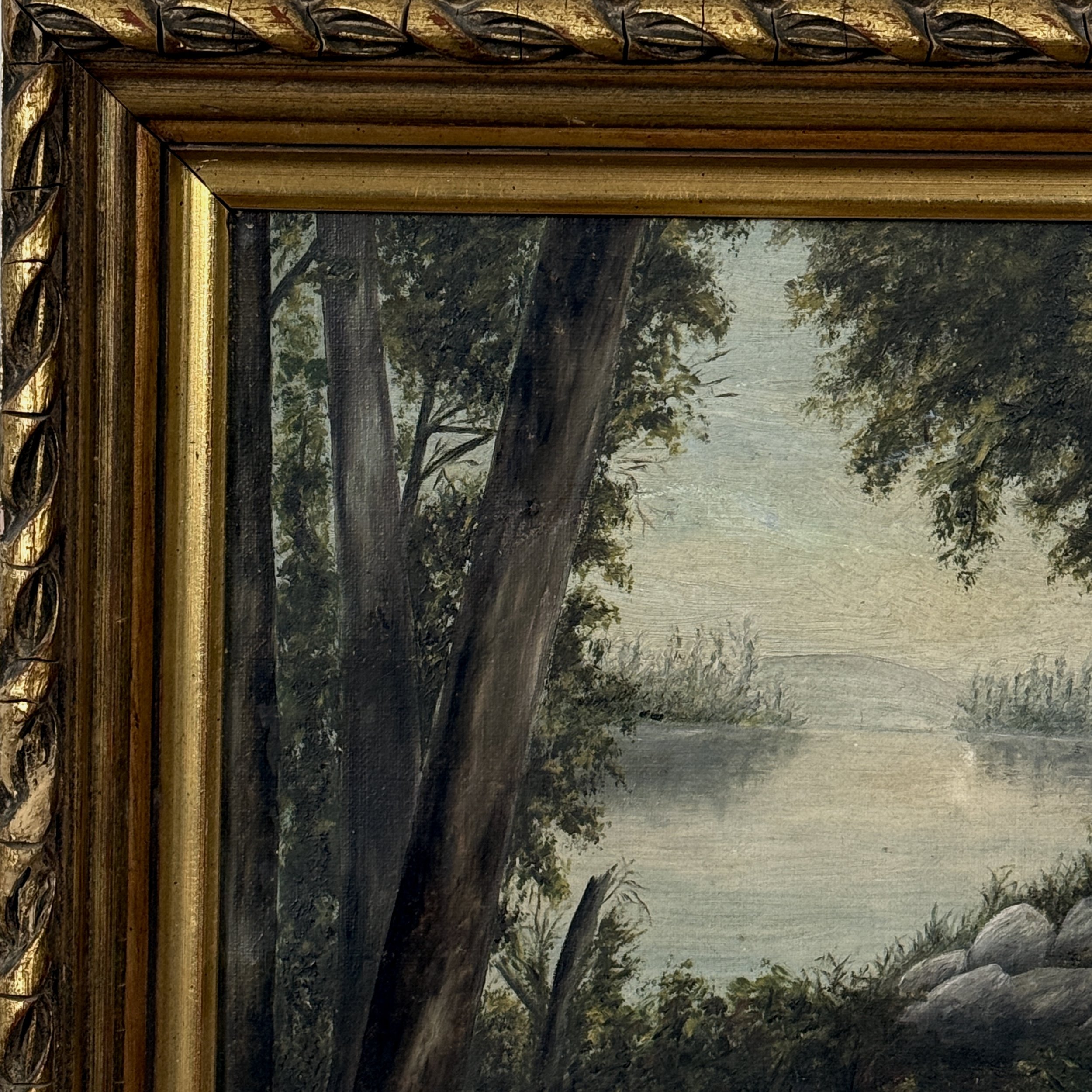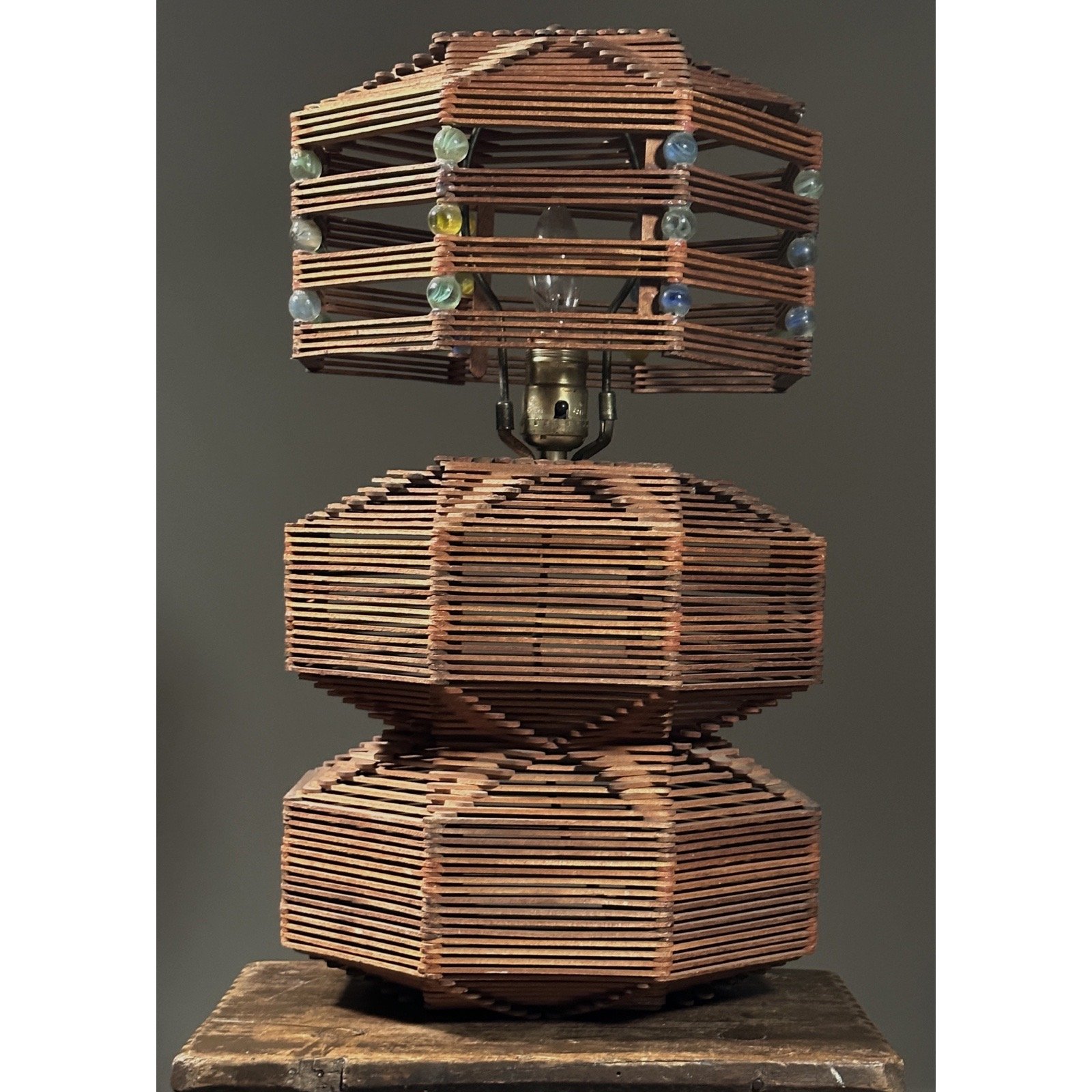Vintage Iatmul Orator Stool (Papua New Guinea)
Vintage Iatmul Orator Stool (Papua New Guinea). From the East Sepik River area, this stool was hand carved from a single piece of wood. Split in the wood most likely existed prior to sculpting. In good condition with wear consistent with age.
Provenance: Prominent tribal art collector Yuri Raskin
Size: 23.25”H x 11”W x 12”D
Every Iatmul community has its own ceremonial chair, similar to this one. This Orator’s Stool (also called a “speaking chair”) is not meant to be sat upon, but is used during village meetings, debates, and tribal ceremonies. During a discussion, the speaker stands next to the orator’s stool and hits the top of the stool with a cluster of leaves, sticks, and grass to validate important points in his argument. He also places leaves on the chair to confirm his statements. When the first speaker is finished and all the leaves lay on the chair, the next speaker can begin his address. After all of the speakers have stated their arguments, the village chief hits the chair a few more times and states a decision for all to follow. Orators also use these chairs to tell the comunity about the clan’s history and mythology while hitting the chair with a bundle of leaves to emphasize points.
The human figure is a common form in Sepik River art. As seen in this sculpture, figures were often given an elongated head and torso and short limbs. Special emphasis was placed on the head to show that it is the most important part of the body, where the spirit resides. The artist carved an elongated nose, possibly in imitation of a bird’s beak, and the nose is pierced with ornaments made of bone or boar’s tusk, just as the Iatmul people wear. The incised patterns on the chest and arms represent scarification patterns that would be seen on many Iatmul men. Scarification is part of a young man’s initiation into the men’s secret society and the scars are considered marks of beauty and status. - Denver Art Museum
Vintage Iatmul Orator Stool (Papua New Guinea). From the East Sepik River area, this stool was hand carved from a single piece of wood. Split in the wood most likely existed prior to sculpting. In good condition with wear consistent with age.
Provenance: Prominent tribal art collector Yuri Raskin
Size: 23.25”H x 11”W x 12”D
Every Iatmul community has its own ceremonial chair, similar to this one. This Orator’s Stool (also called a “speaking chair”) is not meant to be sat upon, but is used during village meetings, debates, and tribal ceremonies. During a discussion, the speaker stands next to the orator’s stool and hits the top of the stool with a cluster of leaves, sticks, and grass to validate important points in his argument. He also places leaves on the chair to confirm his statements. When the first speaker is finished and all the leaves lay on the chair, the next speaker can begin his address. After all of the speakers have stated their arguments, the village chief hits the chair a few more times and states a decision for all to follow. Orators also use these chairs to tell the comunity about the clan’s history and mythology while hitting the chair with a bundle of leaves to emphasize points.
The human figure is a common form in Sepik River art. As seen in this sculpture, figures were often given an elongated head and torso and short limbs. Special emphasis was placed on the head to show that it is the most important part of the body, where the spirit resides. The artist carved an elongated nose, possibly in imitation of a bird’s beak, and the nose is pierced with ornaments made of bone or boar’s tusk, just as the Iatmul people wear. The incised patterns on the chest and arms represent scarification patterns that would be seen on many Iatmul men. Scarification is part of a young man’s initiation into the men’s secret society and the scars are considered marks of beauty and status. - Denver Art Museum
Vintage Iatmul Orator Stool (Papua New Guinea). From the East Sepik River area, this stool was hand carved from a single piece of wood. Split in the wood most likely existed prior to sculpting. In good condition with wear consistent with age.
Provenance: Prominent tribal art collector Yuri Raskin
Size: 23.25”H x 11”W x 12”D
Every Iatmul community has its own ceremonial chair, similar to this one. This Orator’s Stool (also called a “speaking chair”) is not meant to be sat upon, but is used during village meetings, debates, and tribal ceremonies. During a discussion, the speaker stands next to the orator’s stool and hits the top of the stool with a cluster of leaves, sticks, and grass to validate important points in his argument. He also places leaves on the chair to confirm his statements. When the first speaker is finished and all the leaves lay on the chair, the next speaker can begin his address. After all of the speakers have stated their arguments, the village chief hits the chair a few more times and states a decision for all to follow. Orators also use these chairs to tell the comunity about the clan’s history and mythology while hitting the chair with a bundle of leaves to emphasize points.
The human figure is a common form in Sepik River art. As seen in this sculpture, figures were often given an elongated head and torso and short limbs. Special emphasis was placed on the head to show that it is the most important part of the body, where the spirit resides. The artist carved an elongated nose, possibly in imitation of a bird’s beak, and the nose is pierced with ornaments made of bone or boar’s tusk, just as the Iatmul people wear. The incised patterns on the chest and arms represent scarification patterns that would be seen on many Iatmul men. Scarification is part of a young man’s initiation into the men’s secret society and the scars are considered marks of beauty and status. - Denver Art Museum








































